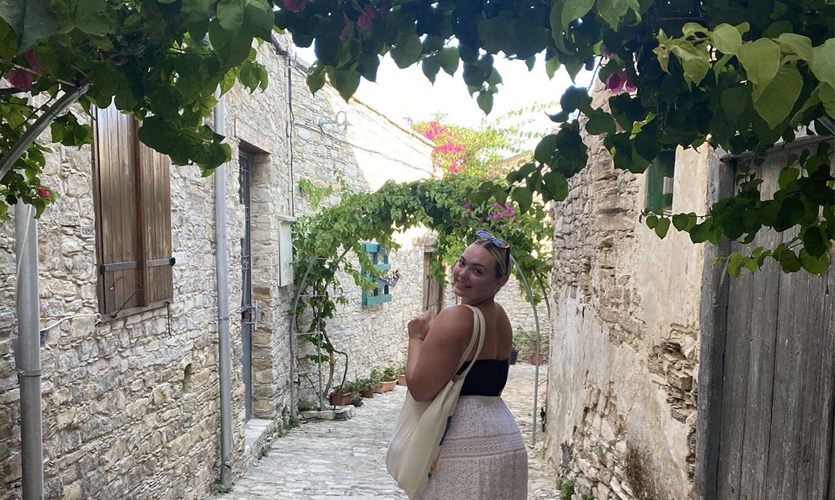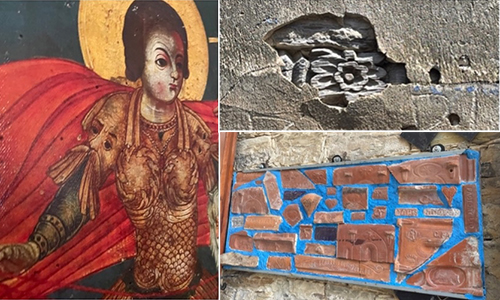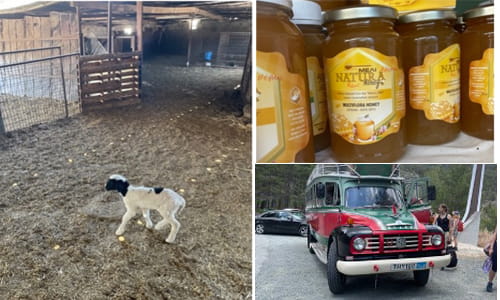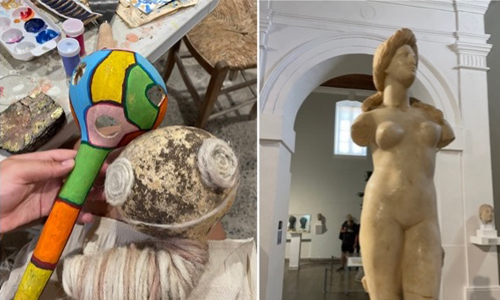My archaeological summer placement in Pano Lefkara, Cyprus

In the summer of 2023, I went to Pano Lefkara in Cyprus on a summer placement with Grampus Heritage and Training Limited. As a current BSc (Hons) Forensic Anthropology student, I discovered this placement through my university lecturers and was lucky enough to be accepted onto their archaeological placement in Cyprus. The placement was fully funded and was a great opportunity to explore another country with many trips (mostly archaeological) and the freedom to explore with the other fifteen students when we weren’t working on our projects.
My summer placement provider
Grampus Heritage and Training Limited is a non-profit organisation based in north west England. They have been managing and promoting European projects related to culture, heritage, archaeology and the environment since 1997. They are enthusiastic promoters of the Turing scheme and offer funded training opportunities to UK students, recent graduates and young workers. The programme provides placements and projects in fields such as archaeology, environmental studies and traditional skills. You can participate in various projects, including ALITHE (Active Learning In The Historic Environment), which takes place in several European countries. Additionally, they offer archaeological and traditional skills placements in several European countries, while environmental placements are also available in the Philippines.

My role on placement
One of the main activities we completed whist in Cyprus was surveying The Green Man and Witch Mark around Pano Lefkara. The Green Man is recurring in a lot of folklore, “there is a great deal of interest in the enigmatic “Green Man,” that foliate head which appears so frequently among medieval church carvings. The term itself came into general usage following Church Architecture,” but examination of her original work reveals that her choice of the term “Green Man” was, on her evidence, based more upon inspiration than fact.” (Centerwall, 2012) The sketches of the Green Man I found compared to Lady Raglan (Raglan, 1939) are extremely similar. As a group, we collected all the data within Pano Lefkara, then later split into two groups to collect data in Kato Lefkara. My main responsibilities within the group included finding the Green Man and witch marks, making interpretational sketches of the marks and surveying the general décor of the churches.
Another project consisted of taking part in various traditional skills, such as mosaic making, rope making and weaving and Kallikantzaroi mask making. The Kallikantzaroi masks have a very interesting story and were used to ward off goblins during Dodekaimero. Dodekaimero is the Greek version of ‘the twelve days of Christmas’ running from 25 December to 5 January. The Kallikantzaroi appear exclusively in this specific period and are absent during the rest of the year. They are said to cause chaos in the home by making noises and moving furniture, however favour children.
We took part in a creative project using roof tiles collected by Martin, the Director of Grampus and leader of the Cyprus placement. We looked at the roof tiles and found that a majority of them had zoomorphic logos, which are common on Romanian and Roman roof tiles. We used the zoomorphic logos to create a tile mosaic scene, which was later hung up on the wall of the olive mill to showcase the work of the volunteers and to decorate the streets of Pano Lefkara. The zoomorphic logos are usually found on French interlocking tiles from 1850. These interlocking tiles reduce the weight on the roof timbers, so you don’t have to replace them before tiling the roof so more people could afford them at the time. It was thought they were influenced by the Ottoman Empire, but it was later discovered that they were influenced by the Roman Empire. Even though they were established by the French, they had bee symbols in Turkey and an Italian eagle in Italy.

Exploring Cyprus
During my five weeks in Cyprus, we went on five trips. One of the trips was a ride on a vintage 1950s bus through the mountains. On our way, we stopped at a rose museum where we saw how a family business makes oils, lotions, chocolate and alcohol using roses. We also had lunch at a botanical garden that is a popular attraction for both locals and tourists alike. On another trip, we visited the ancient city of Kourion. This city was founded by the Argives, who were the inhabitants of ancient Argos in the Peloponnese. The city was built around the fertile valley of the Kourion River, the Cape of the Cats and possibly a small section of the Troodos Mountain range. The ruins at the site include several monuments such as the Theatre, the Agora, the Stoa, the Hellenistic public structure in the northeastern part, the Roman Nymphaeum, the House of Eustolius, the House of Gladiators, the Earthquake House and the early Christian Basilica. All these ruins have been well preserved and provide a glimpse into the rich history of the city. Notable sites include the House of Achilles and the main scene depicted on the mosaic of Achilles and Ulysses in the house of Lycomedes. This mosaic portrays Achilles, disguised as a woman, who has been sent by his mother to avoid the Trojan War.
We also visited Choirokoitia, which is a stone and earthen architecture reconstruction of a Neolithic settlement. The settlement dates back to the 7th millennium B.C. It reflects the successful habitation of the island of Cyprus by farming and herding communities since at least the end of the 9th millennium and represents the culmination of what has been termed the Cypriot pre-ceramic Neolithic. The houses built were round and the dead were usually buried under them in tombs.
On another trip we went to a halloumi farm not far from Pano Lefkara. We had a tour around the farm where the sheep and goats are kept. We got to help feed baby goats and hold them which was an amazing experience. After we went to where the halloumi is made and learnt the process before we tried both the halloumi and another cheese made from the left-over liquid after the halloumi was collected. Whilst we were at the farm, we took photos wearing traditional Sheppard-styled clothes and took part in a photo shoot on the lands with the baby goats and sheep around us.

Finally, we visited Nicosia – the capital city of Cyprus. Nicosia is the border of both the Greek-Cypriot and Turkish-Cypriot domains of the island. It is a lot more modern than the mountain villages we had been staying in with lots of shops – including chain brands, restaurants and tourist attractions. We went to the Nicosia Museum where lots of archaeological finds are being displayed, including many ancient Greek statues depicting Aphrodite dating to the first century BC and Septimius Severus which was discovered in 1928.
During our trip, we participated in a variety of activities. Some of these included making silver rings, touring a traditional Lefkara house, proposing a project for an Islamic graveyard, creating clay figurines, visiting the beach and socialising with each other. We had an amazing group of volunteers with whom I shared many enjoyable moments, such as eating together, dancing, singing, exploring the village and discovering the country as a whole. I would recommend a Grampus placement to anyone looking for a fully funded summer placement. They are a great company with a huge range of projects linking people from lots of different backgrounds and expertise. I made lots of great friends from all around the world and learnt skills useful in many aspects of life during my stay.
Thinking about studying at LJMU?
Find out more about BSc (Hons) Forensic Anthropology and the global placement opportunities available through the Faculty of Science Placement Learning Support Unit to see where our exciting degrees could take you.
Are you a current LJMU student thinking about studying abroad?
If you're currently studying at LJMU and want to study abroad for a semester or find out more about summer placements, speak to your course leader to find out what opportunities could be available or contact the Global Opportunities team. Most opportunities are advertised throughout the year up until April/May.


